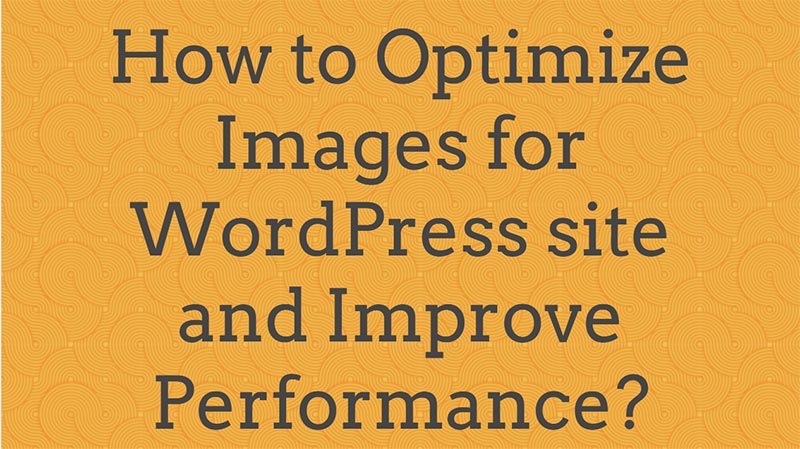Learn how to effectively optimize images on your WordPress website to enhance performance and improve user experience.
In the world of website optimization, Images play a pivotal role in capturing attention and conveying messages effectively. There are royalty-free image websites where you can find images as per your needs.
However, images’ beauty can quickly become a curse if they are not optimized properly. This is where image optimization comes into play, offering many benefits that can enhance user experience, boost SEO rankings, and improve website performance.
In this comprehensive guide, we’ll delve into various techniques and best practices to optimize images on WordPress sites effectively.
What is Image Optimization?
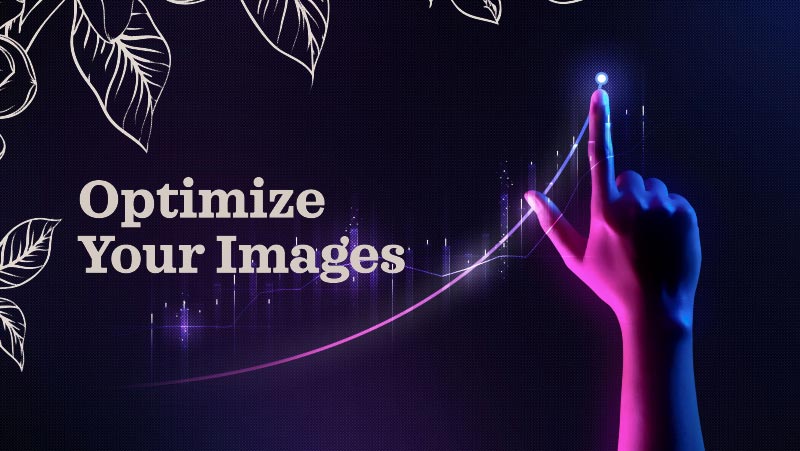
Image optimization refers to the process of reducing the file size of images without significantly sacrificing quality. It involves various techniques such as compression, resizing, and format selection to ensure that images load quickly without compromising visual appeal. By optimizing images, website owners can strike a balance between aesthetics and performance, creating a seamless browsing experience for users across different devices and network conditions.
Why Image Optimization Matters?
Images are integral to web design, enhancing visual appeal and conveying information effectively. However, they can also significantly impact website performance if not optimized properly. Here’s why image optimization matters:
- Page Loading Speed: Unoptimized images can increase page load times, leading to a poor user experience and higher bounce rates.
- Bandwidth Consumption: Large image file sizes consume more bandwidth, potentially increasing hosting costs.
- SEO Benefits: Optimized images improve page load speed, which is a crucial factor for search engine rankings.
- Mobile Responsiveness: Mobile users often have slower internet connections, making image optimization essential for a seamless browsing experience.
Enhancing User Experience
Studies have shown that users form an opinion about a website within milliseconds of viewing it, and visuals play a significant role in shaping that impression. Slow-loading images can frustrate users and drive them away from your site, leading to higher bounce rates and lost opportunities.
Optimized images, on the other hand, contribute to a smoother browsing experience by reducing load times and minimizing friction. Whether users are accessing your website on a desktop, smartphone, or tablet, they expect fast and responsive performance. By optimizing images, you can ensure that your website loads swiftly across all devices, keeping users engaged and satisfied.
Boosting SEO Rankings
In the competitive landscape of search engine optimization (SEO), every detail counts. Images can significantly impact your website’s SEO performance, both positively and negatively. Large, unoptimized images can slow down page load times, frustrating users and affecting search engine rankings.
Search engines like Google consider page speed as a ranking factor, and images play a crucial role in determining overall loading times. By optimizing images and reducing file sizes, you can improve your website’s speed and performance, thereby enhancing its visibility in search engine results pages (SERPs).
Additionally, optimized images are more likely to be properly indexed by search engines, making it easier for users to discover your content through image search.
Improving Website Performance
Website performance is not just about speed; it’s about creating a seamless and enjoyable user experience. Slow-loading websites are not only frustrating for users but also detrimental to business objectives. Research has shown that even a one-second delay in page load times can result in decreased conversions and revenue loss.
Image optimization plays a crucial role in improving website performance by reducing bandwidth consumption and server load. When images are optimized, they require less data to transfer, resulting in faster loading times and improved responsiveness.
This is especially important for mobile users who may have limited bandwidth or slower internet connections. By prioritizing image optimization, website owners can ensure that their sites perform optimally across a wide range of devices and network conditions.
Best Practices for Image Optimization in WordPress
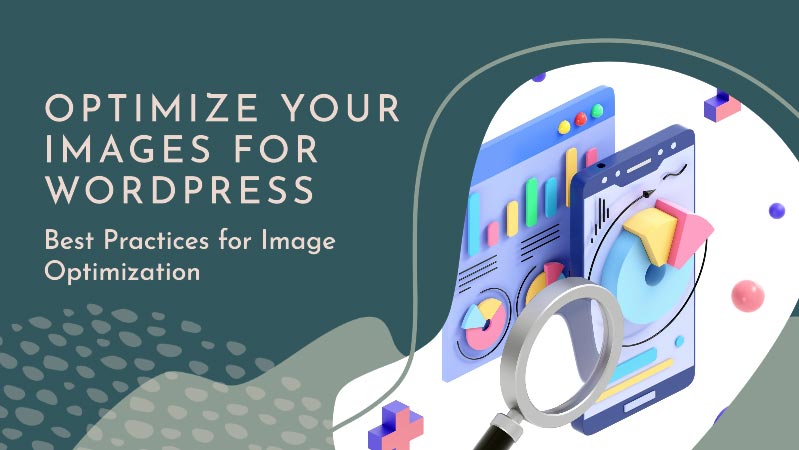
1. Understanding Image Formats:
Selecting the appropriate image format can significantly impact file size and quality. Here are the common formats and their best use cases:
JPEG (Joint Photographic Experts Group):
- JPEG is the most widely used image format on the web, suitable for photographs and complex images with many colors.
- It utilizes lossy compression, meaning it sacrifices some image quality to reduce file size, making it ideal for large images without compromising much on visual clarity.
- However, repeated saving of JPEG files can lead to a degradation in image quality due to compression artifacts.
PNG (Portable Network Graphics)
- PNG is preferred for images with transparency or sharp edges, such as logos, icons, and illustrations.
- It employs lossless compression, preserving image quality without sacrificing detail, which makes it larger in file size compared to JPEG.
- PNG is also suitable for images requiring a transparent background, providing better quality than GIF in such cases.
GIF (Graphics Interchange Format):
- GIF is commonly used for animations and simple images with few colors, such as icons, logos, and graphics with text.
- It supports animation and transparency but is limited to 256 colors, which may result in a loss of quality for complex images.
SVG (Scalable Vector Graphics):
- SVG is a vector-based image format ideal for logos, icons, and graphics that require scalability without loss of quality.
- It uses XML-based markup language to define graphics, making it lightweight and suitable for responsive web design.
2. Resize Images Before Uploading:
Before uploading images to WordPress, resize them to the dimensions required by your theme or layout. Avoid uploading oversized images and relying on CSS to resize them, as it still loads the full-size image, impacting performance.
3. Compress Images Without Compromising Quality:
Reduce image file sizes through compression without sacrificing quality. WordPress offers several plugins for automatic image compression, such as WP Smush and EWWW Image Optimizer. These plugins compress images upon upload or in bulk, ensuring optimal performance without manual intervention.
4. Leverage Lazy Loading:
Implement lazy loading to defer offscreen images, allowing the visible content to load first. This technique improves perceived performance and reduces initial page load times. Many WordPress caching plugins, such as WP Rocket and W3 Total Cache, offer lazy loading functionality.
5. Utilize CDN for Image Delivery:
Content Delivery Networks (CDNs) distribute your images across multiple servers worldwide, delivering them from the server closest to the user’s location. This reduces latency and accelerates image loading times. Popular CDN services like Cloudflare and Amazon CloudFront seamlessly integrate with WordPress.
6. Enable Responsive Images:
WordPress introduced native support for responsive images, automatically serving appropriately sized images based on the user’s viewport. Ensure that your theme supports responsive images, or implement the ‘srcset’ attribute manually to specify multiple image sizes for different screen resolutions.
7. Optimize Image Metadata:
Optimize image metadata, including titles, alt text, and descriptions, for improved accessibility and SEO. Descriptive alt text not only helps visually impaired users understand the content but also enhances search engine discoverability.
8. Regularly Audit and Optimize Images:
Periodically audit your website for unoptimized images using tools like GTmetrix or Google PageSpeed Insights. Identify and optimize images that may have been overlooked during initial optimization efforts, ensuring consistent performance improvements.
Utilizing Plugins for Automated Image Optimization
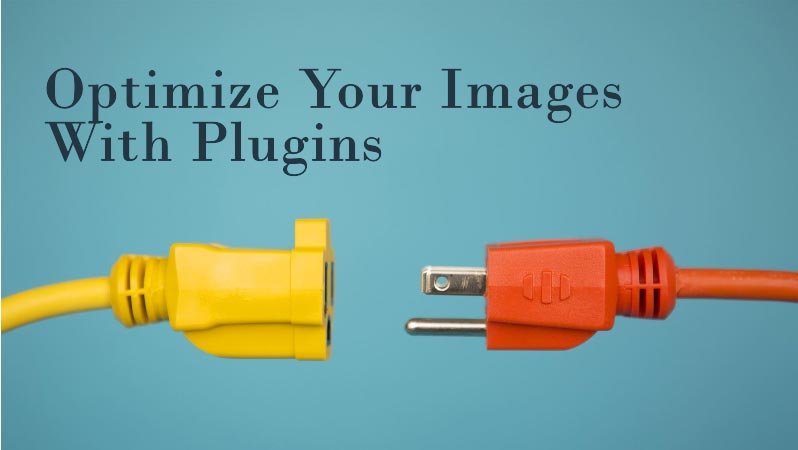
Studies have shown that users are more likely to abandon a website if it takes more than a few seconds to load, and images are often a significant factor contributing to slow loading times. This is where automated image optimization plugins come into play, offering a streamlined solution to ensure that your website’s images are both high-quality and load quickly across various devices and browsers.
Introducing Automated Image Optimization Plugins
Manually optimizing every image on your website can be a time-consuming and tedious task, especially if you have a large number of images. This is where automated image optimization plugins come in handy, offering a convenient way to optimize images with minimal effort.
These plugins integrate seamlessly with popular Content Management Systems (CMS) such as WordPress, Joomla, and Drupal, allowing you to optimize images directly from your website’s dashboard. With just a few clicks, you can automatically compress and resize images, ensuring optimal performance without sacrificing quality.
Key Features of Image Optimization Plugins
Bulk Optimization: One of the primary features of image optimization plugins is the ability to optimize multiple images at once. Whether you’re uploading new images or optimizing existing ones, these plugins allow you to process them in batches, saving you valuable time and effort.
Compression: Image compression is essential for reducing file sizes without compromising visual quality. Most image optimization plugins utilize advanced compression algorithms to significantly reduce file sizes while preserving image clarity and detail.
Resize Options: In addition to compression, these plugins offer various resize options to ensure that images are displayed correctly across different devices and screen sizes. You can set custom dimensions or choose from predefined sizes to optimize images for desktops, tablets, and mobile devices.
Automatic Optimization: Many image optimization plugins offer automatic optimization features, allowing you to set preferences once and have all future images automatically optimized upon upload. This hands-free approach ensures consistent image optimization without manual intervention.
File Format Conversion: Choosing the right file format can also impact image optimization. Image optimization plugins often include features to convert images to more efficient file formats such as WebP, which offers superior compression without sacrificing quality.
Integration with CDN: Some advanced image optimization plugins integrate seamlessly with Content Delivery Networks (CDNs), allowing optimized images to be served from servers located closer to the user, further improving loading times and performance.
Choosing the Right Plugin
With a plethora of image optimization plugins available, choosing the right one for your website can be daunting. Here are a few factors to consider when selecting an image optimization plugin:
Compatibility: Ensure that the plugin is compatible with your CMS and version. It’s essential to choose a plugin that is regularly updated to ensure compatibility with the latest software versions.
Performance: Look for plugins that offer excellent performance without compromising image quality. Test different plugins to see which ones produce the best results in terms of image compression and loading times.
Ease of Use: Opt for plugins that are user-friendly and intuitive, with a simple interface that makes it easy to optimize images without technical expertise.
Additional Features: Consider whether the plugin offers any additional features such as lazy loading, image lazy loading, or integration with other optimization tools.
Reviews and Ratings: Finally, read reviews and ratings from other users to gauge the reliability and effectiveness of the plugin. Choose plugins with positive reviews and a good track record of customer satisfaction.
Impact of Image Optimization on WordPress Site Performance
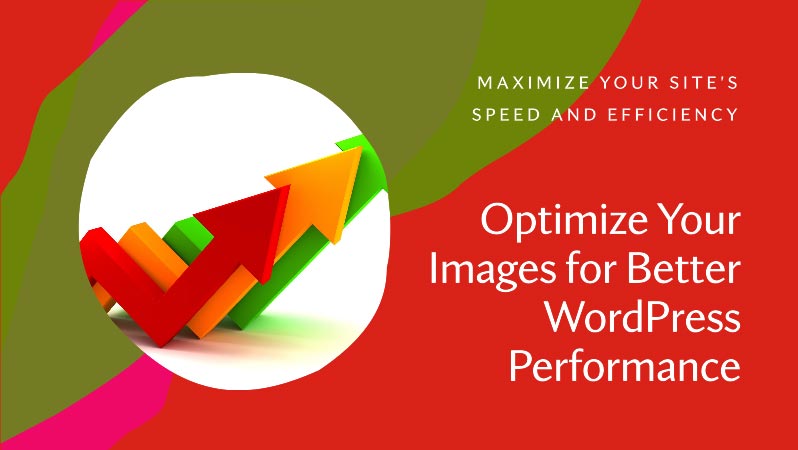
Slow-loading websites often lead to high bounce rates, diminished user experience, and decreased conversion rates. Among various factors influencing website speed, images stand out as significant contributors to both performance enhancement and degradation. In this article, we delve into the intricacies of image optimization and how to accurately measure its impact on WordPress site performance.
Why Measure the Impact?
Measuring the impact of image optimization is crucial for several reasons:
- Performance Evaluation: Assessing the effectiveness of image optimization techniques helps in understanding their contribution to overall website performance.
- Resource Allocation: By quantifying the benefits of image optimization, website owners can allocate resources judiciously, focusing on strategies that yield maximum results.
- User Experience Enhancement: Optimized images contribute to faster loading times, resulting in improved user experience and engagement.
- SEO Benefits: Google considers page speed as a ranking factor, making image optimization imperative for SEO success. Measuring its impact helps in optimizing for search engine visibility.
Methods for Measuring Impact:
Page Load Time:
Page load time serves as a fundamental metric for evaluating website performance. By comparing the load times of pages before and after image optimization, one can quantify the direct impact of optimization techniques. Tools like Google PageSpeed Insights, GTmetrix, and Pingdom provide detailed reports on page load times, highlighting areas for improvement.
Page Size Reduction:
Image optimization primarily aims at reducing the overall size of web pages. Tools like GTmetrix and Pingdom offer insights into the size of individual elements, including images, scripts, and stylesheets. By analyzing the reduction in page size post-optimization, one can ascertain the specific contribution of image optimization to overall size reduction.
Bandwidth Consumption:
Bandwidth consumption directly correlates with website loading speed. Monitoring bandwidth usage before and after image optimization provides a tangible measure of its impact. Web hosting control panels often include tools for monitoring bandwidth usage, allowing website owners to track changes over time.
Google PageSpeed Insights:
Google PageSpeed Insights offers a comprehensive assessment of website performance, including image optimization. It provides recommendations for optimizing images based on factors like image size, format, and compression. By implementing these recommendations and comparing subsequent performance scores, one can gauge the impact of image optimization on overall website performance.
User Engagement Metrics:
Improved website performance, facilitated by image optimization, often leads to enhanced user engagement metrics such as decreased bounce rates, increased session durations, and higher conversion rates. Analyzing these metrics using tools like Google Analytics provides indirect yet valuable insights into the impact of image optimization on user behavior.
Conclusion
Optimizing images is essential for maintaining a fast, responsive, and user-friendly WordPress website. By following the best practices outlined in this guide, you can significantly enhance your site’s performance, improve user experience, and boost search engine rankings. Remember, image optimization is an ongoing process, so make it a part of your regular website maintenance routine to reap the full benefits.
Now over to you,
Are you having trouble optimizing images on your WordPress site?
How much performance has been improved after optimizing images?
Please let us know your thoughts and follow us on Facebook and Twitter.
